Bioethics Forum Essay
Involuntary Withdrawal: A Bridge Too Far?
RD, a 32-year-old male, was admitted to the hospital with hypoxic COVID pneumonia–a potentially life-threatening condition characterized by dangerously low levels of oxygen in the body- during one of the pandemic’s surges. While RD’s age gave the clinical team hope for his prognosis, his ability to recover was complicated by his being unvaccinated and having multiple comorbidities, including diabetes and obesity. His condition worsened to the point that he required extracorporeal membrane oxygenation (ECMO), a machine that maintains the functioning of a person’s heart and lungs.
Given its scarcity–only 264 of the over 6,000 hospitals in the United States offer ECMO, according to the Extracorporeal Life Support Organization–as well as its high cost and the inadequate supply of staff required to maintain it, ECMO primarily serves as a bridge to support critically ill patients until they can receive an organ transplant or implanted medical device. For RD, ECMO was started to support him until he could be evaluated for, and possibly receive, a bilateral lung transplant. Despite its intended use as a treatment of last resort, some patients can remain on ECMO for weeks or months. And some are awake, alert, and capable of medical decision-making.
RD was one such patient. However, the transplant evaluation committee ruled out RD’s candidacy for bilateral lung transplantation, based on his poor potential for recovery and a lack of family and friends to provide post-transplant support. This determination raised the prospect of continued ECMO treatment being a bridge to nowhere. But RD was comfortable on ECMO and wanted to remain in the ICU. The ICU intensivist contacted the ethics consult service with questions about whether continued ECMO support was medically and ethically inappropriate.
Ethical Analysis and Process
First, the ethics consultants met with members of the ICU team to explore their ethical concerns. The ICU clinicians believed RD’s almost certain permanent ICU-dependence rendered continued life-sustaining treatment futile. They also raised distributive justice concerns about using ECMO for a patient who would likely never recover. ECMO-eligible patients from other hospitals were routinely refused admission at RD’s facility because of machine and staffing shortages, and approximately 90% of such patients would die as a result. The physicians worried about the fairness of allowing RD to use one of the hospital’s few ECMO machines indefinitely when other lives could be saved.
The clinical ethicists then met with RD, who said that he was not ready to die and, in fact, thought he had a good quality of life in the hospital. Indeed, he was alarmed by the possibility that the doctors could disconnect his life support without his consent. RD’s perceived right to exercise autonomy over his treatment–as well as to determine what counted as an acceptable quality of life for him–was in tension with the clinical team’s concerns about providing care they considered to be medically inappropriate and exercising poor stewardship of resources.
The ethics consultants saw multiple issues contributing to the ICU team’s discomfort with RD’s desired care plan. While the physicians felt they could keep RD alive on ECMO, they did not think doing so indefinitely was consistent with their role as healers. In addition, the physicians were concerned that it would be unjust to use scarce resources to maintain a patient in poor health when those resources could be used to cure other patients.
Disambiguating these concerns with the ICU team was crucial to the ethics process. While questions of resource allocation were clearly in the background in considering RD’s treatment, hospitals don’t allow very ill patients to die simply so that their beds can be used by other people. So, it became particularly important to understand RD’s goals of care in the context of the goals of medicine more broadly. Was what RD desired–namely, remaining in the ICU on ECMO for weeks or even months until his inevitable death–a goal that a health care system should not only respect, but effectuate?
With this in mind, the ethics consultants advised continuing discussions with RD about his goals of care (including palliative care and social work services) to ensure that he truly understood that his condition was incurable and that his desire to remain connected to ECMO was the result of his belief that this was an acceptable quality of life for him. Focusing on the reasons for his decision confirmed the authenticity of RD’s preference: he maintained that he wanted to continue treatment. RD and the clinicians ended up at an impasse, with an intractable disagreement regarding what constituted an appropriate plan of care.
Given the unresolved conflict, the ethics team advised bringing RD’s case to the hospital’s ethics committee, an interdisciplinary group that included ethicists, physicians, and community members whose endorsement was required by hospital policy for any unilateral withholding or withdrawing of life-sustaining treatment.
The Decision
The committee’s task was to determine whether RD’s clinicians in the ICU had established that continued treatment was medically inappropriate under the hospital’s policy. If the committee endorsed the clinicians’ perspective, the ICU team would have been permitted to withdraw ECMO over RD’s objection. However, the committee declined to endorse the clinicians’ determination of medical inappropriateness largely because RD had capacity, and so his treatment preferences were respected.
A few weeks after the decision, RD passed away when a clot formed in his ECMO circuit. So, while he was not taken off ECMO against his wishes, his case generated widespread institutional examination of the relevance of a patient’s decision-making capacity to clinicians’ determinations of medical inappropriateness and unilateral treatment withdrawal under conditions of scarcity.
Lingering Questions
While some practitioners found continuing ECMO in RD’s case medically inappropriate, ethical concerns lingered regarding the moral appropriateness of withdrawal of treatment for patients like RD with decision-making capacity who want to continue aggressive care. And so, the question remains: what ought to be done with treatment long-term for such patients? It is close to canonical in contemporary medical ethics that capable patients should be allowed to establish their own goals of care and, furthermore, to determine what constitutes an acceptable quality of life for themselves. Were these specifications sufficient to justify maintaining RD on ECMO indefinitely? Or is there space for clinicians to say that the only quality of life they will be able to achieve for a given patient is inconsistent with the appropriate practice of medicine, and so they should be permitted to refuse to provide interventions aimed toward that health state?
Joanna Smolenski, PhD, is an assistant professor at Baylor College of Medicine’s Center for Medical Ethics and Health Policy and a clinical ethicist at Houston Methodist Hospital. Previously, she was a clinical ethics fellow at UCLA Health.
Series Editors’ Comment: Where Public Health Ethics Meets Clinical Ethics
RD’s case exemplifies the complexities of scarce, advanced, life-sustaining technologies and the difficulties that arise if we try to distribute them justly. ECMO is meant to be a bridge to transplantation or recovery from critical illness, but sometimes it sustains life without hope of recovery to a life outside of the hospital. In this way, RD’s case draws attention to the border between public health ethics and clinical ethics, and the challenges in patient care that arise where they meet.
The primary issue this case raises extends beyond the ethics committee’s decision to support RD’s preference to remain on ECMO, and importantly so. It is both reasonable and important to approach RD’s case individually, as a case to be resolved using the methods of clinical ethics. A decision to not withdraw ECMO is justifiable, not merely because of the obligation to respect the patient’s choice, but because it is difficult to argue that ECMO was medically nonbeneficial or inappropriate when it continued to provide both longevity and quality of life.
If an ethics committee instead adopts a public health framing for RD’s case, it risks allowing implicit, interpersonal bias to guide decision makers in the moment, since RD is only one person, not a population of persons who are each under consideration for the same scare resource. Unless an ethics committee can rely on a predetermined process for implementing the norms of public health ethics into the routine ways that health care professionals develop treatment plans with individual patients that can be fairly and equitably applied, the committee is right to focus on how to best respect a specific patient’s goals of care. In RD’s case, this yielded a treatment plan appropriately focused on respectfulness, nonmaleficence, and beneficence.
However, the responsibilities of health care extend from individual patients to whole communities. There is an undeniable reality in this case that other patients who could recover with the support of this resource simply do not have access to it. While it is important for ethics consultants to be cautious when arguments of resource scarcity are employed to justify withholding or withdrawing life-sustaining medical interventions, this is a situation where the resource truly is not available because maintaining RD’s life on ECMO entails denying life-sustaining technology to other patients who may die without it. This is a failure of communitarianism and justice, even though it is respectful and compassionate to RD. Ethics consultation services and committees are obligated to address these broader distributive injustices, but their resolution may be more appropriate to policymaking, rather than patient care.
One of the fundamental challenges to fulfilling the responsibilities of distributive justice is that when the distress of a single case fades, so does the drive to create robust policy and procedures that could synthesize public health ethics and clinical ethics to help allocate resources more fairly to the broader community. This leads to a vicious circle, with each new distressing narrative experienced anew by patients and families and residually amplified for health care professionals, and no end to the impasses encountered with each trip around the circle.
– Georgina Campelia and Thomas Cunningham
Learn more about the series, Clinical Ethics Case Studies for Hastings Bioethics Forum.
Read the previous essays in the series here and here.
Attention clinical ethicists: learn how to contribute to the series.
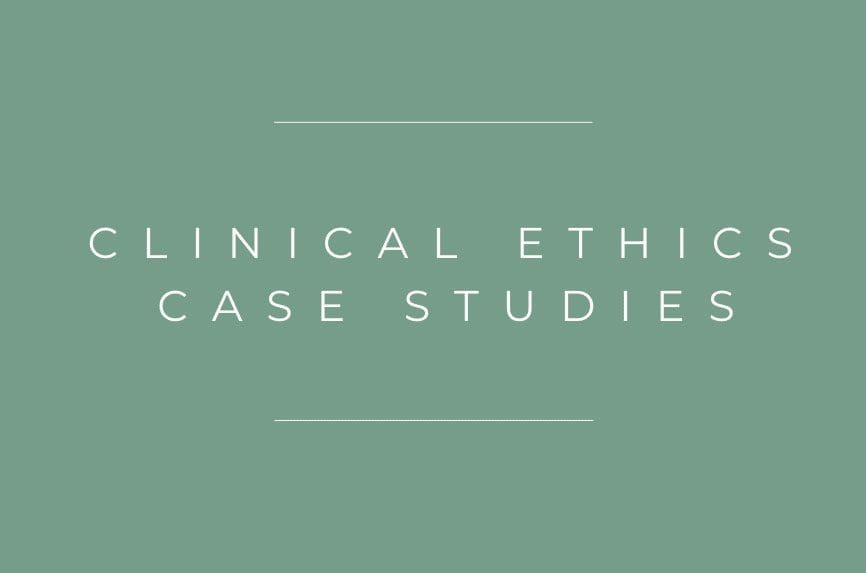


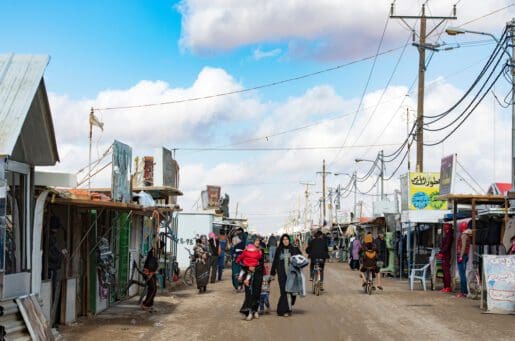

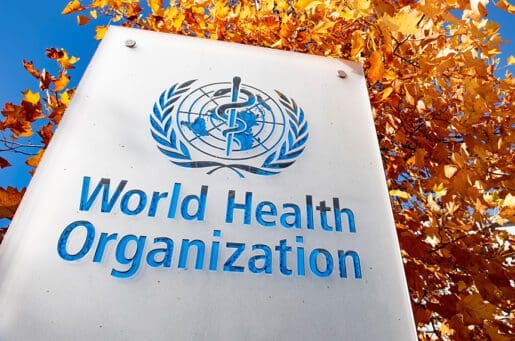


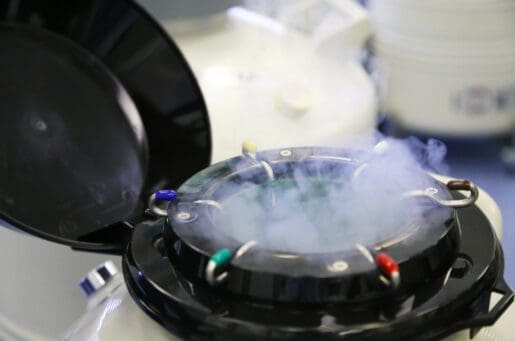



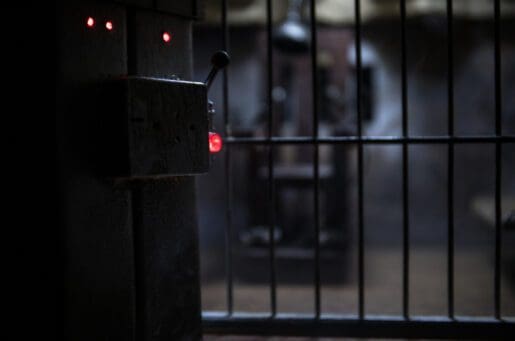
It is quite evident that we are losing the social perspective in our ethical analysis, perhaps as a consequence of having lost sight of the social dimension in the development of our Western societies. The absolute prioritization of the individual dimension creates this type of conflict, which is why I totally agree with the claim by te editors of the loss of “communitarianism”.
In addition, it seems that in the initial ethical analysis the position of the ICU team is not subject to disambiguation, since it does not seem to be taken by criteria of adequacy of the treatment to the individual, but rather hides behind the concern for a fair distribution of resources. It would have seemed appropriate for the ethics committee to have worked on this disambiguation. It is possible that our inability to deal with the social perspective means that their arguments are sometimes hidden behind claims based on the individual perspective.
We need to discover that the ethics of public health do not contradict the ethics of individual care, both complete and complement each other. But for this it is necessary to discover that the social dimension is fundamental in ethical analysis. And in understanding the life of each individual.
Thank you for this case – difficult indeed. I will have my Morals and Medicine students read and discuss this.
In the practice of medicine there are treatments that serve, hopefully, as bridges to recovery. If recovery does not occur, the therapy may then become the ongoing substitute for a failed organ system. Such is the case with dialysis and mechanical ventilation. Like ECMO, these therapies are limited and costly. There are risks, side effects, and functional abilities are diminished. Some individuals will rethink their situation, when the goals of therapy have changed and their lives depend on dialysis without hope for transplantation, or mechanical ventilation without hope of life without this breathing machine. Some individuals can accept a change to palliative and comfort care. Some cannot.
What is ethically correct? The individual in this case has adapted to a sedentary, bedridden, state of existence on ECMO. Has he regained enough pulmonary function to return to mechanical ventilation with oxygen supplementation? Could he be considered and reevaluated for lung transplant? What would he need to achieve, to qualify as a candidate? What type of support system needs to be put in place?
It is reasonable to think that he could be angry at the unfairness of his circumstances. This should be addressed psychologically. Clinicians must approach with compassion. He is asking to live, not to die. Should we place a value on his life?
When dialysis was new and access much more limited, diabetics in renal failure could not qualify for dialysis. Diabetics were found to be brittle and intolerant of the fluid shifts that occurred. Now diabetics compose a majority of patients on dialysis.
ECMO is the new therapy on the block. Why was this particular individual chosen to receive it? Was it his youth? All the years of life that he should have had ahead of him? Is it his fault that someone else is deprived of an ECMO rescue attempt? Abstractly, public health concepts of utilitarianism make sense, but for each patient, a clinician has a responsibility to help each individual patient towards the health of living; certainly, when they have capacity, cognitive function, and a will to live. This individual has a right to be heard in court before others consider snuffing out his life against his wishes. The principles of beneficence, autonomy, nonmaleficence, and justice, must remain our guideposts.
Thank you for presenting this case. It is a vital discussion in the face of new illnesses, evolving therapies, and the human condition. The COVID-19 pandemic was a time of great moral distress. With communication, compassion, and forums such as Hastings, we can do better in the future.
The intricacies of life-sustaining efforts and the role of the law as a guide are poignant, particularly during public health emergencies. Being placed on extracorporeal membrane oxygenation (ECMO) exemplifies a situation where patients rely on the law to speak for their wishes when they cannot. These ethical debates are discussed in Joanna Smolenski’s essay, “Involuntary Withdrawal: A Bridge Too Far?”. “RD,” a patient placed on ECMO for COVID-related pneumonia, was determined to be ineligible for a lung transplant. RD expressed wishes to remain on ECMO in the intensive care unit (ICU), regardless of whether this meant no recovery. Scarce resources, especially during public health emergencies, require discussions on resource allocation. Is it permissible and ethical to discontinue life-sustaining efforts if the patient has the capacity to express the desire to remain alive using those interventions?
When considering resource allocation, the clinical ethicists on the case rightly delineate that distributive justice could be compromised. The Belmont Report poses an interesting question: “What considerations justify departure from equal distribution?” (National Commission). The guidelines state that burdens and benefits can be understood based on a person’s need, merit, societal contribution, and effort. However, when assessing healthcare in life-threatening contexts, is it just to allocate treatments based on these factors? Distributive justice ensures equitable access to healthcare and research regardless of one’s circumstances. Choosing to withdraw life-saving efforts from RD in favor of saving another patient would set a dangerous precedent in an already inequitable society. The ethics committee arrived at the proper decision to decline clinicians’ decision to withdraw ECMO.
In addition to distributive justice, the ethical considerations regarding patient autonomy and capacity require further examination. While some patients on ECMO are unconscious, RD was alert and possessed the capacity to make medical decisions. The American Medical Association Code of Medical Ethics states that “a physician shall support access to medical care for all people” and “a physician shall be dedicated to providing competent medical care, with compassion and respect for human dignity and rights” (AMA Principles of Medical Ethics). Another principle states, “A physician shall recognize a responsibility to participate in activities contributing to the improvement of the community and the betterment of public health” (AMA Principles of Medical Ethics). Therefore, in RD’s case, the clinicians had a duty to respect his medical decision-making skills. If choosing to withdraw care to save the most people, this course of action emphasizes a utilitarian perspective and further complicates the balance between justice and beneficence, or maximizing good (Savalescu et al. 2020). Nevertheless, a conflict between individual care and public health arose when medical equipment was scarce during a public health emergency.
The Patient Self-Determination Act (PSDA) requires healthcare providers to inform patients about advanced directives and ensure patient wishes about treatment are documented and legally followed (H.R.4449, Patient Self-Determination Act of 1990). According to the PSDA, clinicians treating RD must legally provide ECMO. If RD had been satisfied with his quality of life, then removing ECMO would disregard his autonomy and self-determination. While the PSDA is a start at codifying the care that patients are obligated to receive, there should be more work done in solidifying potential exceptions to the rule, if any. For example, adding sections on the obligations of hospitals during public health emergencies may further distinguish the responsibilities when providing individual care that could conflict with public health.
Last, the importance of consent is key to understanding how patient-centered care can remain a priority. In New York State, do not resuscitate (DNR) orders require a patient’s oral or written consent and two witnesses, and they are often issued by a physician (N.Y. Comp. Codes R. & Regs. Tit. 14 § 633.18). When DNR orders are issued, patients with capacity can make informed decisions about their medical care in line with their unique wishes. Similarly, it should be necessary to affirm that patients consenting to continue medical treatment can accomplish those actions, especially if the treatment causes no harm to the patient. In RD’s case, he remained comfortable on ECMO in the ICU, albeit with a conflict between the medical and moral appropriateness of continuing ECMO. The clinicians expressed that ECMO was medically inappropriate because it would not help RD recover. However, how do we distinguish between something being medically inappropriate? Does it solely involve actions that cause more harm, or is keeping a patient in a stable, neutral state also applicable, as in RD’s case? It is interesting to consider whether this would have been an issue had an advanced directive or proxy stating no withdrawal of care had been legally codified.
In essence, withdrawing care without patient consent should deserve the same legal and ethical attention as providing care without consent, particularly for patients with the capacity to make medical decisions. During public health emergencies, scarce resources may lead to a more utilitarian approach to healthcare. However, this action must uphold physicians’ duty to patient-centered care and respect patient autonomy. Expanding on healthcare policy to provide more guidance on public health emergencies is one step toward ethically resolving the ambiguities of resource allocation.
References
AMA Principles of Medical Ethics. https://code-medical-ethics.ama-assn.org/principles.
H.R.4449 – 101st Congress (1989-1990): Patient Self Determination Act of 1990. (1990, July 2).
https://www.congress.gov/bill/101st-congress/house-bill/4449
National Commission for the Protection of Human Subjects of Biomedical and Behavioral
Research. (1979). The Belmont Report: Ethical Principles and Guidelines for the
Protection of Human Subjects of Research. U.S. Department of Health and Human
Services.
N.Y. Comp. Codes R. & Regs. Tit. 14 § 633.18
Amended New York State Register October 28, 2015/Volume XXXVII, Issue 43,
eff.11/1/2015 Amended New York State Register September 21, 2016/Volume XXXVIII,
Issue 38, eff. 9/21/2016
Savulescu J, Persson I, Wilkinson D. Utilitarianism and the pandemic. Bioethics.
2020;34(6):620-632. doi:10.1111/bioe.12771